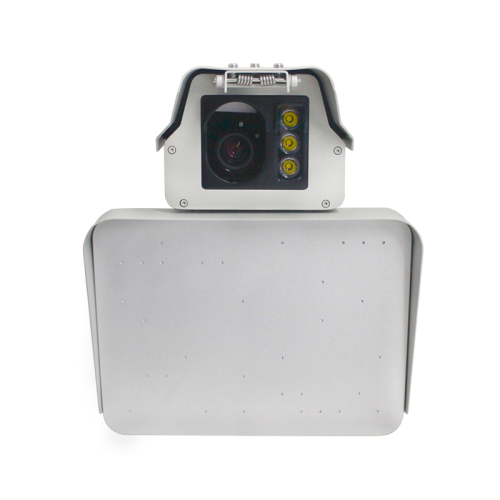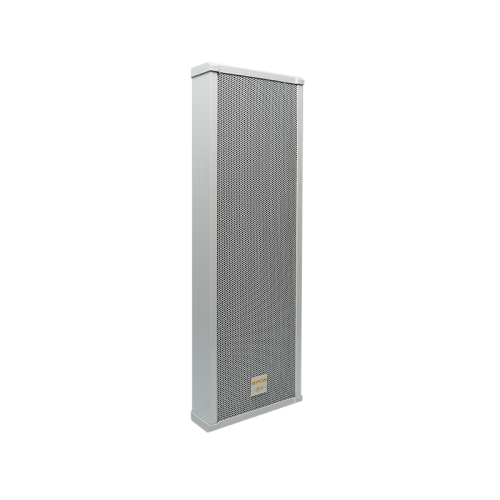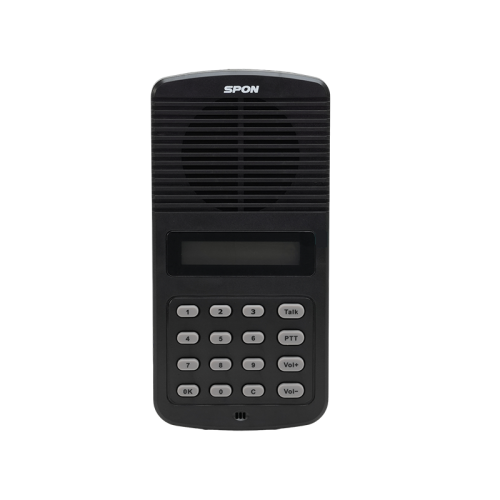Just How an IP Paging System Improves Emergency Situation Response in Workplaces
Just How an IP Paging System Improves Emergency Situation Response in Workplaces
Blog Article
Comprehensive Guide to Public Address Equipments
Public address (PA) systems are commonly come across in various tasks such as office structures, residential complicateds, business office structures, colleges, healthcare facilities, train stations, flight terminals, bus manufacturing facilities, terminals, and banks. This guide will offer a detailed review of PA systems.
Parts of a PA System
Despite the kind of PA system, it normally is composed of 4 almosts all: resource tools, signal amplification and processing equipment, transmission lines, and speaker systems.
Resource Equipment
Music Athletes: Made use of for history songs.
Microphones: Includes conventional microphones and zone-select microphones.
Voice Storage Space Devices: For storing company and emergency broadcast messages.
Signal Processing and Amplification Equipment
Audio Signal Processor: Deals with audio signal compensation, attenuation, equalization, etc.
Pre-Amplifier: Pre-amplifies audio signals.
Power Amplifier: Enhances audio signals to drive audio speakers, providing continuous voltage outcome.
Transmission Lines
The solution monitoring system software program allows the surveillance facility to put in centralized governance over the broadcast and intercom communication systems. It facilitates real-time tool standing tracking, fault diagnosis, and troubleshooting, strengthening system reliability and uniformity.
Speakers
Ceiling Speakers: Indoor, flush-mounted in the ceiling, constant voltage or continuous resistance.
Wall-Mounted Speakers: Wall-mounted, consistent voltage or consistent resistance.
Column Speakers: Free-standing, appropriate for exterior or interior usage.
Horn Audio speakers: High level of sensitivity, ideal for indoor or outdoor usage.
Masked Audio speakers: For outside settings like yards or parks, developed to appear like stumps, rocks, or mushrooms.
Sound Technical Specifications of PA Systems
In day-to-day settings, common sound stress degrees are:.
Office sound: 50-60 dB.
Typical conversation: 65-70 dB.
Textile manufacturing facility noise: 110-120 dB.
Little caliber gunfire: 130-140 dB.
Large jet airplane sound: 150-160 dB
Signal-to-Noise Proportion (SNR)
SNR measures the proportion of the signal voltage to noise voltage, shared in decibels. A higher SNR shows less sound and much better audio quality. Normally, SNR needs to be at least 63 dB, with high-fidelity audio speakers getting to over 110 dB.
Input Sensitivity
This is the minimal input voltage called for to attain the ranked result power. Greater level of sensitivity indicates much less input signal is needed. Generally, power amplifiers have an input level of sensitivity of 0.775 V (0 dB) to 1.5 V (+6 dB)
Maximum Result Power (Audio Speakers)
The maximum power an audio speaker can take care of simply put bursts without damage.
Rated Power (Audio Speakers)
The continual power an audio speaker can handle without distortion, gauged in watts (W) Rated power is an average value, and speakers can take care of peak power up to 2-3 times the ranked power.

Continuous Voltage (70V or 100V)
Makes use of voltage to drive speakers, allowing longer transmission distances and several speakers in parallel. Audio quality is a little inferior compared to constant resistance systems.
Power amplifiers must match the voltage ranking of the speakers to avoid damage.
Constant Resistance.
Uses current to drive audio speakers, giving better audio high quality but restricted transmission distance (approximately 100 meters)
Insusceptibility matching is critical; for instance, an 8Ω amplifier ought to be matched with 8Ω audio speakers.
Picking and Configuring Speakers
Speaker Option
Indoor Spaces with Ceiling: Use flush-mounted ceiling speakers without a back cover.
Indoor Spaces with Only a Structure: Use ceiling speakers with back covers or hanging ball-type speakers.
Outside Areas: Usage weatherproof column speakers or horn speakers.
Parks and Gardens: Use concealed audio speakers developed for aesthetic functions.
High-End Interiors: Use classy hanging audio speakers.
Fire-Safe Areas: Use fireproof audio speakers with closed layouts.
Audio Speaker Arrangement
Speakers ought to be dispersed evenly across the solution location to make sure a signal-to-noise proportion of at the very least 15 dB. Regular history sound degrees and suggested audio speaker positioning are:.
Premium workplace corridors: 48-52 dB.
Large mall: 58-63 dB.
Busy road locations: 70-75 dB.
Speakers must be placed to make sure an audio pressure degree of 80-85 dB in a lot of atmospheres. Ceiling audio speakers must be spaced 5-8 meters apart, or 8-12 meters for history music only. For emergency broadcasts, ensure that no area is even more than 15 meters from the nearest audio speaker.
Amplifier Sizing
Estimation Approach:
For service and organization PA systems: P= K1 × K2 × ΣPo where:.
P = Complete amplifier outcome power (W)
K1= Line loss payment factor.
K2 = Aging aspect (1.2-1.4)
ΣPo = Overall power demand.
For smoke alarm systems, use 1.5 times the total number of audio speakers.
Instance Computation:
For a background songs system with 10 speakers at 20W each: P= 1.26 × 1.2 × 10 × 20W × 0.7= 211W.
Last amplifier capacity should be 1.3 times this value: 211W × 1.3= 274W
Installation Demands
Audio Speaker Positioning
Audio speakers should be equally and purposefully dispersed to meet insurance coverage and audio high quality requirements.
Power Supply
Little PA systems can make use of normal power outlets, while systems over 500W need a committed power supply. Power should be steady, with automated voltage regulatory authorities if necessary. The power supply need to be 1.5-2 times the devices's power intake.
Cord and Channel Installation
Use copper-core cords for signal transmission. Cable televisions should be shielded and transmitted through appropriate channels, staying clear of interference from electrical lines. Make certain appropriate splitting up between power and signal lines.
Lightning Defense and Grounding
PA systems require proper grounding to prevent damages from lightning and electrical disturbance. Use committed basing for devices and make sure all grounding steps fulfill safety requirements.
Installation High Quality
Wire and Port Top Quality
Use premium cords and connectors. Make sure links are secure and appropriately matched to avoid signal loss or interference.

Keep proper stage alignment in between audio speakers. Use trusted techniques for connecting cords, such as soldering or terminal blocks, and secure connections from ecological damage.
Grounding and Security Checks
Verify all grounding is properly installed and examine the safety and security of power connections and tools settings. Perform thorough evaluations prior to completing the installment.
Evaluating and Change
Check the whole system to ensure all parts operate appropriately and meet style requirements. Readjust settings as needed for optimal performance.
Craftsmanship Demands for Public Address Solutions
Building High Quality Demands
The top quality of building and construction in a public address (PA) system task is crucial to meeting design specifications and user requirements. For that reason, it is necessary to purely adhere to the layout strategies, comply with requirements, prevent rework and delays, and preserve in-depth construction logs. Trick areas to concentrate on consist of:
Wire Option and Installment
During the building of a PA system, focus is often concentrated on tools, however the choice of transmission cables is additionally essential for accomplishing adequate sound quality. Premium broadcasting equipment (amplifiers, audio speakers, etc) is needed, but the quality of the transmission wires likewise affects sound top quality.
Identical audio speaker cables have fundamental capacitance between the wires, which is not ideal for long-distance transmission as IP PA System it can attenuate high frequencies and create unclear or smothered high noises. Twisted pair wires can successfully conquer this concern and needs to be used for long-distance transmission.
Shielded twisted set cable televisions stop electromagnetic interference and improve wire durability, making them suitable for long-distance installments. The size of the cords likewise impacts efficiency. Thicker cable televisions reduce transmission loss however rise expense and installment difficulty. The selection of cords must stabilize performance and cost, complying with these standards:.
Use balanced connections for all signal connections between PA system devices, with soldered endpoints.
For systems with fire alarm features, make use of fire-resistant or flame-retardant copper-core cables.
Cables should be routed via steel avenues or cable television trays, and ought to not share trays with illumination or power lines. Smoke alarm system cables need to have fire protection procedures. The bending radius of wires should be no less than 15 times the cord size, and power line must be separated from signal and control cable televisions. Confirm cable lengths before installation and match them to the style illustrations, lessening cable splices. Utilize specialized ports and leave appropriate cable length at both ends with clear permanent markings. when splicing is necessary.
Connecting Speakers and Program Lines
When linking audio equipment, it's essential to guarantee phase uniformity between speakers and program lines. Phase disturbance in between audio speakers can create significant variants in sound pressure degrees, causing unequal sound distribution. Therefore, stick purely to circuitry tags and standardized link methods.
Three common connection techniques in systems are:.
Twisting Technique: Stripping insulation from cables, twisting them with each other, and safeguarding them with tape or clamps. This method is basic but might weaken with time.
Screw Terminal Approach: Removing insulation and placing cables right into screw terminals, then tightening the screws. This technique is commonly used.
Soldering Method: Removing insulation, twisting cords, and soldering them together, after that covering with tape. This technique is much more dependable and ideal for high-demand or damp settings.
Regardless of the technique, usage tinned cable to facilitate soldering and protect against corrosion. Use PVC or metal avenue to safeguard subjected wires from joint boxes to audio speakers.
System Grounding
The PA control area ought to have both operational and safety grounding. To minimize disturbance from the power system, separate protective and operational groundings need to be established. Suggested technique is to set up different copper strips for weak and solid electrical systems in their particular upright shafts. This guarantees ideal procedure of the weak electrical system.
The general grounding resistance should not go beyond 1Ω.
Building And Construction Evaluation
Because of the intricacy of PA systems with various links and parts, comprehensive assessment is essential. General examinations ought to include:
Security checks of devices setup.
Verification of high-voltage line arrangements.
Precision of links and discontinuations.
Unique focus ought to be provided to gadget settings, such as resistance matching switches on audio speakers. Validate that buttons are set correctly to stay clear of damages. Inspect the outcome selection switches over on signal source gadgets, settings on signal processing tools, amplifier linking switches, and power supply settings.
Once these steps are validated, get ready for devices debugging. Because debugging techniques vary based on certain job requirements, they are not covered carefully below.
Top Quality Records
Certifications, technical requirements, and documents for audio speakers, units, transformers, controllers, outlets, amplifiers, sound processing devices, protected cable televisions, etc
Pre-installation, concealed assessment, self-inspection, and mutual examination records.
Records of design adjustments and last illustrations (IP Paging Microphone).
Quality examination and examination records for avenue and cord setup
Records of PA system installation and debugging.
Major Installation Demands
Tools Setup Order
PA system equipment is usually set up in cabinets. For simpler systems, a 1.0-meter closet may suffice. Area frequently utilized equipment like the major broadcast controller at the top for very easy gain access to. For even more facility systems with a 2.0-meter cabinet, position frequently used equipment in between 0.8 to 1.5 meters for ease.
Equipment Connection Order
Attach the computer to the primary broadcast controller. Audio lines usually connect directly to the input of the preamplifier or the first channel of the mixer. The mixer results are distributed to every amplifier, and if utilizing pure power amplifiers, link to the INPUT sound input. Amplifier outputs then link to addressable terminals, area control boxes, or zone selectors, and lastly to the speakers - SPON Communications.
Wiring Considerations

Power Supply
Utilize a devoted power sequencer for PA systems to guarantee consistent power management and constant tool startup series. The major power supply ought to consist of a ground line to shield equipment and avoid static-related threats.
Devices Option
Do not depend entirely on look; consider individual evaluations and market online reputation. Products from respectable suppliers with substantial screening and experience are typically much more trustworthy.
Wireless Microphones
For cordless microphones, pick UHF models for far better variety and signal security. Alternatives consist of one-to-one, one-to-two, one-to-four, or one-to-eight arrangements (SPON Communications). For mobile usage, like headset microphones. Lavalier microphones might have poorer audio top quality and are prone to responses.
Connection Cable Televisions
Use solid connections for durability and prevent depending on adapters, which can trigger loose connections over time. Properly solder connections to ensure resilience and ease of upkeep.
Cabinet Installation
If making use of deep power amplifiers, make certain the closet dimensions (e.g., 600x600mm) work with the equipment. Procedure cupboard deepness and spacing before setup.
Correct preparation, premium equipment, and meticulous setup and upkeep are key to attaining ideal sound top quality and trustworthy performance in a PA system.
Normally, SNR must be at the very least 63 dB, with high-fidelity audio speakers reaching over 110 dB.
Audio speakers need to be positioned to make sure a sound stress degree of 80-85 dB in many environments.When attaching audio equipment, it's critical to make sure stage consistency between audio speakers and broadcast lines. Stage interference between audio speakers can cause substantial variations in audio pressure degrees, leading to uneven audio circulation. Amplifier outputs after that connect to addressable terminals, area control boxes, or area selectors, and ultimately to the speakers.
Report this page